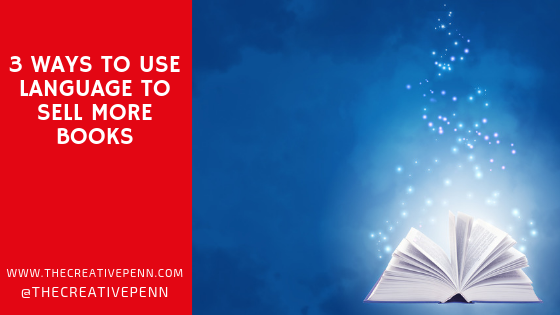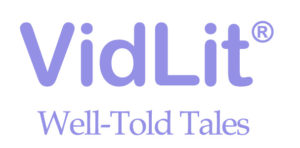Every aspect of your book is part of its marketing. Rob Eagar walks us through three essential elements that, if done right, will help you sell more books.
 What if you could increase your book sales without spending more money on advertising, publicity, or promotions?
What if you could increase your book sales without spending more money on advertising, publicity, or promotions?
It is possible when you understand the power of language at your disposal.
We live in an era where technology influences every aspect of our lives, including the Internet, social media, computers, Alexa, and e-reader devices. But, concluding that technology rules the day leads to a misconception that can prevent many authors from reaching their full sales potential.
Language drives the book sale, not technology.
People do not buy books because computers bombard us with offers to purchase.
Readers decide to purchase based upon the word of mouth they hear, the customer reviews they see, and the marketing copy they read. Technology simply delivers those words to potential readers in more ways than ever before.
Therefore, you can master technology and still struggle at selling books. Authors are supposed to be the masters of words. But, have you learned how to master marketing words?
If not, let’s fix that problem here and now. There are three types of persuasive marketing copy that every author has the complete control to create:
- Book title
- Book description
- Book accolades
Let’s examine each type of language in more detail to help your book capture as many sales as possible:
1. Book Title
You’re probably familiar with the adage, “Never judge a book by its cover.” That notion may be true about book covers, but it doesn’t apply to book titles. Every day, people judge whether to buy a book based on the title.
 Compelling titles attract interest and stimulate a purchase, while dull titles cause people’s eyes to glaze over and lose interest. You have direct control over creating a title that will work in your favor.
Compelling titles attract interest and stimulate a purchase, while dull titles cause people’s eyes to glaze over and lose interest. You have direct control over creating a title that will work in your favor.
There is no perfect way to create a book title. However, there are proven principles you can follow to ensure that your title is a marketing asset, rather than a liability.
The ultimate purpose of your book title is to tease, not to teach.
Never confuse your title as a teaching tool. Instead, it’s a teasing tool. Your title’s primary job is to draw readers to your book, not teach readers what you know.
Without reader interest, there is no book sale. For example, notice how these fiction and nonfiction titles tease you to want more information about the book:
Fiction examples:
- The President is Missing
- A Killer’s Mind
- Something in the Water
- The Other Woman
Nonfiction examples:
-
- The Truth About Men
- The Life-Changing Magic of Tidying Up
- Born a Crime
- The 7 Habits of Highly Effective People
Effective titles use the power of persuasive language to drive book sales by engaging readers in the following ways:
- Attract attention and generate curiosity
- Suggest how a book’s content will entertain or educate the reader
- Imply the results or benefits the reader will enjoy from a book
There is no perfect titling method. There is also no perfect word count, although shorter titles are easier for people to remember. Plus, you cannot expect everybody to like your title.
However, you can always follow this rule of thumb: Never settle for a bland title.
 Lackluster titles are obvious. They typically occur because frustrated authors rush the process. I teach my bestselling clients to always create numerous title options. Don’t put unrealistic expectations on yourself to demand a finished title during a quick brainstorming session.
Lackluster titles are obvious. They typically occur because frustrated authors rush the process. I teach my bestselling clients to always create numerous title options. Don’t put unrealistic expectations on yourself to demand a finished title during a quick brainstorming session.
Instead, create various options and let them percolate in your mind for a few weeks. Also, ask beta readers to provide input on their favorite option.
Your title is within your control. Take your time, use solid principles, and develop a winning title that is provocative and memorable.
2. Book Description
After people see a title that attracts their attention, their interest usually leads them to read the book description.
The description isn’t the only reason readers buy books. Word of mouth, advertising, and author reputation play a large role in convincing people to purchase.
However, your book description is one area where you have total sway over what people see. While you can’t control other marketing factors, you get to determine the book description that shoppers view.
Thus, your book description offers a golden opportunity to directly influence a reader’s decision-making process. It’s where your language gets to crystallize into one cohesive summary.
Plus, your book description appears in several pivotal places throughout the book-selling process, including:
- Back cover copy on a printed book
- Book detail page on Amazon and over 100 other online retailers
- Publisher and distributor catalog copy
- Publisher website
- Author website
Based on all of the places where people may see your book description, you need to think seriously about the book description that you create. You usually get 150 – 300 words capture the reader’s interest, so your words must count.
When written well, great marketing copy can close a lot of book sales by itself.
Whenever I train authors or help my top clients create a winning book description, I refer to these excellent examples to follow:
Fiction: The Girl on the Train by Paula Hawkins
Nonfiction: Getting Past No by William Ury
If you write novels, you can create a persuasive book description or “synopsis” using this three-step template:
- Start with a one-sentence “hook” that arrests the reader’s attention.
- Next, describe your main character wrestling the primary conflict in your story.
- Close with a suspenseful cliffhanger that makes readers wonder what happens.
In order for a non-fiction book description to be successful, the marketing language must resonate with the reader in two key ways:
- Show that you understand how the reader feels
- Show that you understand what the reader wants
When people consider buying a non-fiction book, they are usually motivated by an internal desire to solve a problem, learn something new, or feel inspired.
 Logic makes people think, but emotion makes them act. If you can identify the feeling that is motivating the reader, then you create an emotional connection that makes the reader infer, “This author understands me.”
Logic makes people think, but emotion makes them act. If you can identify the feeling that is motivating the reader, then you create an emotional connection that makes the reader infer, “This author understands me.”
Wring the maximum value out of writing a great book description. Display it everywhere that your book is for sale.
People never tire of compelling language. Never get tired of using it.
3. Book Accolades
Besides your book title and description, there is another type of persuasive marketing language that you control: the accolades or achievements that your book receives.
Readers respond to accolades because they prefer books that have a satisfying reputation. That’s why you see books touting “New York Times bestseller” or authors proclaiming to be a USA Today or Wall Street Journal bestseller.
Accolades signal that your book should be perceived as a high-quality item that shoppers should value.
Currently, there are over 1,000,000 new books published each year. What chance does your book stand at competing against millions of other titles? One word: Differentiation
If your book has achieved an extra level of credibility, you would be remiss to withhold that influential language. Display any and all legitimate accolades on your bio, website, Amazon sales page, etc. (By the way, telling people your book is an “Amazon bestseller” is not a legitimate accolade.)
Displaying accolades for the world to see will help you close more book sales for free. Here are five types of honors that you should exhibit once they occur:
- National bestseller status
- Endorsements from well-known people
- Major sales milestones (i.e. – over 100,000 copies sold)
- Reviews from high-profile media outlets
- Literary awards
These types of honors raise a question that worries some authors, “What if I don’t have any accolades?” For instance, you may be a first-time author who is just starting out with no awards or sales history. That’s normal.
Here are three options you can pursue and display as they transpire:
- Highlight the accomplishment of “Over 100 positive Amazon reviews”
- Display any local or regional awards
- List endorsements from notable leaders you know
Any author can strive for these types of achievements to help differentiate their book within a crowded genre. But, an accolade won’t increase your book sales unless you display it for readers to see.
Language is the power of the book sale. Fortunately, language is within your complete control as an author.
Your title, book description, and accolades have the power to help close more book sales without spending more money. And, if you spend money on advertising, displaying powerful language on your ads will make them even more profitable.
What if you could sell more books for free? Now you know how. Take control over your marketing language and enjoy wielding the power of words.
Do you think that your book title, description and accolades are doing their job to sell your book? Please leave your thoughts below and join the conversation.
 Rob Eagar is one of the rare marketing consultants to help both fiction and nonfiction books hit the New York Times bestsellers list. He even helped a 23-year-old backlist book become a New York Times bestseller.
Rob Eagar is one of the rare marketing consultants to help both fiction and nonfiction books hit the New York Times bestsellers list. He even helped a 23-year-old backlist book become a New York Times bestseller.
Rob has coached over 600 authors and is creator of The Author’s Guide series, a collection of books that teaches writers how to increase their book sales. Get 3 FREE e-books to jumpstart your book sales as a gift from Rob at his website.
